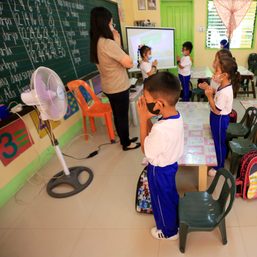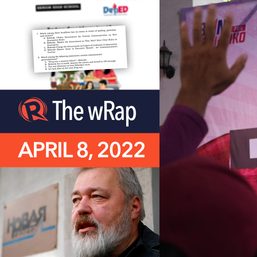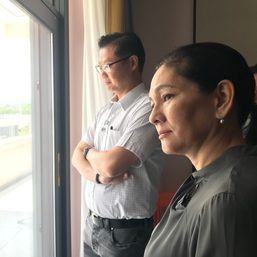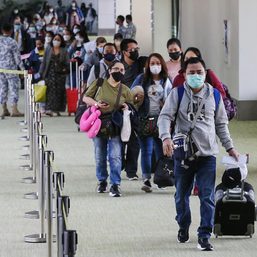SUMMARY
This is AI generated summarization, which may have errors. For context, always refer to the full article.

In the government, unspent funds mean unrealized plans. It could mean projects forgone or delayed by another year.
That’s because under the cash-based budgeting system enforced since 2019, if an agency fails to spend its allotted funds within the year, it will revert to the Treasury. Whatever project or item the money was meant for, the agency will have to pitch and defend it all over again to get it funded the following year.
That was the worry of Senators Joel Villanueva and Nancy Binay when they flagged billions of pesos in unspent funds in the budgets of the Technical Education and Skills Development Authority (TESDA) during a hearing of the agency’s proposed 2021 budget on Thursday, September 24.
Budgets, because the government is currently operating on two budgets. One is the regular budget for 2020, and the other is the 2019 budget, which President Rodrigo Duterte authorized to be extended for another year because it was passed and approved late.
Citing information from the budget department, Villanueva said TESDA has some P3.6 billion unspent from its 2019 budget, or 25% of the total allotment. Villanueva was TESDA chief from 2010 to 2015.
Meanwhile, TESDA has only spent 39% of its “share allotment” this year as of August 28, Villanueva said. The agency’s budget in 2020 is P12.97 billion.
Adding to these, TESDA is also receiving P1 billion under the Bayanihan to Recover as One (Bayanihan 2) law – the government’s measure to tide the country over the COVID-19 pandemic for the rest of the year, including its adverse economic impact.
Enrollments in TESDA training programs are down to 12,393 as of August, according to Secretary Isidro Lapeña. From an original target of more than 382,000 scholars for the year, the agency cut it to just 158,000 after the pandemic set in. The current number of scholars falls far behind.
TESDA has a lot of catching up to do, Binay pointed out. She and Villanueva asked Lapeña: What is the plan?
TESDA is confident it would meet 100% of its target of 215,000 scholars for the rest of 2020, Lapeña replied. The agency plans to spend much of its remaining funds on programs for them.
“Kaya pa ba? Kaya pa bang magastos ‘yung pera or talagang a certain portion of the budget ay magre-revert back na lang to the Treasury? Just being realistic ha? Kasi nga alam naman natin, hanggang ngayon naka-lockdown pa rin tayo at mahirap – walang face-to-face classes. So may mga ganung constraints ngayon ang TESDA,” Binay told Lapeña.
(Can you do it? Can the money still be spent or will a certain portion of the budget just have to revert to the Treasury? Because we know we’re still locked down even now, and it’s difficult – there are no face-to-face classes. So TESDA has those constraints now.)
There is no question that many Filipinos need a fallback and need to train for whatever jobs are still available in the pandemic-hit climate – that’s exactly what TESDA is here for. But can it run programs adapted to scholars’ needs and apprehensions during the pandemic?
“We are confident that we can use these funds para sa ating mga kababayan. Ang daming nangangailangan ng training. ‘Pag nagkaroon ng lifting or improvement ng ating community quarantine, then we can go full stream ahead,” Lapeña said.
(We are confident we can use these funds for our countrymen. Many need training. Once there’s lifting or improvement of our community quarantine, then we can go full steam ahead.)
However, a government expert recently said that the earliest the Philippines can get a vaccine against COVID-19 is in April to June 2021. The Duterte administration has hinged its pandemic response on the development and delivery of a successful vaccine.
The government is proposing a P13.7-billion budget for TESDA in 2021. The agency is asking lawmakers for an additional P14 billion to cover all its projects in the pipeline.
Lapeña said delays in spending in 2019 were due to that year’s national elections. In 2020, the pandemic disrupted plans.
Given current realities, Binay asked Lapeña if TESDA is able to carry on training programs and, if so, which programs would be successful?
Among existing programs, trainings in construction and information technology remain viable, Lapeña said. Courses for tourism-oriented jobs are naturally down because the pandemic has hurt the tourism industry, and its demand for workers is down, too.
Agriculture courses are a priority as the country races for food security. Besides, they are more feasible because they are mostly done in the field and not in enclosed classrooms, Lapeña added.
Training courses are conducted in a hybrid mode – a mix of physical classes and online instruction. Lapeña said health safety protocols are observed during physical classes.
As for Bayanihan 2, Lapeña said TESDA plans to spend its P1 billion allotment on the following training programs:
- agriculture and agri-business: P300 million
- construction: P300 million
- manufacturing: P200 million
- health, wellness, and related programs: P100 million
- other sectors: P100 million
Villanueva said TESDA will need to commit the funds it will receive from Bayanihan 2 by December 20 in order to hold on to them, that is, so that they won’t revert to the Treasury as unused funds. – Rappler.com
Add a comment
How does this make you feel?


![[EDITORIAL] Ano sana ang takeaway ni Sara Duterte sa firesale ng mga laptops?](https://www.rappler.com/tachyon/2023/05/animated-DEPED-laptop-fiasco-carousel.jpg?resize=257%2C257&crop_strategy=attention)











There are no comments yet. Add your comment to start the conversation.